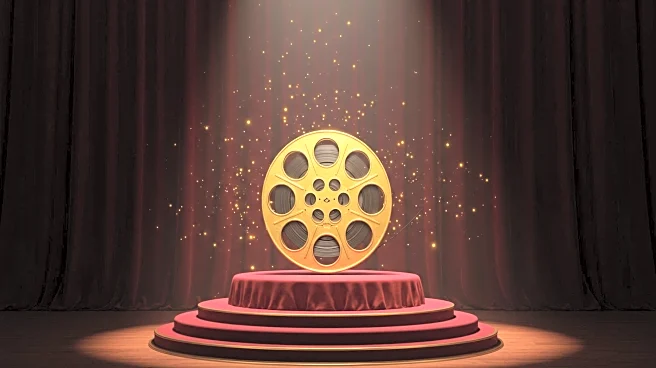What's Happening?
The film 'Hair, Paper, Water,' directed by Trương Minh Quý and Nicolas Graux, marks a return to poetic documentary filmmaking. The directors follow Cao Thị Hậu's journey back to her childhood cave in central Vietnam, exploring themes of language, image, and sound. The film reflects on the imminent disappearance of the Indigenous language Rục, using Vietnamese words in a typographic visuality to create tension between orality and textuality. The voice-over evolves from children's cries to folk songs and accounts of violence, allowing the protagonist to narrate her story. The film's language emerges organically, with technical flaws and serendipities embraced during editing, creating a unique cinematic experience.
Why It's Important?
This film highlights the cultural and linguistic challenges faced by Indigenous communities, emphasizing the importance of preserving languages and traditions. By using a poetic documentary style, the filmmakers bring attention to the emotional and spiritual connections between language and identity. The film's approach to storytelling through visual and auditory elements offers a fresh perspective on documentary filmmaking, potentially influencing future projects in the genre. It also underscores the role of cinema in documenting and preserving cultural heritage, providing a platform for marginalized voices.
What's Next?
The film's success at the Locarno Film Festival may lead to increased interest in poetic documentaries and films that explore cultural and linguistic themes. It could inspire other filmmakers to adopt similar approaches, focusing on the preservation of Indigenous languages and traditions. The film may also spark discussions on the role of cinema in cultural preservation and the importance of supporting diverse voices in the industry.
Beyond the Headlines
The film's exploration of language and identity raises ethical questions about the preservation of cultural heritage and the responsibilities of filmmakers in representing marginalized communities. It also highlights the potential for cinema to serve as a tool for social change, encouraging audiences to reflect on their own cultural identities and the importance of preserving linguistic diversity.












